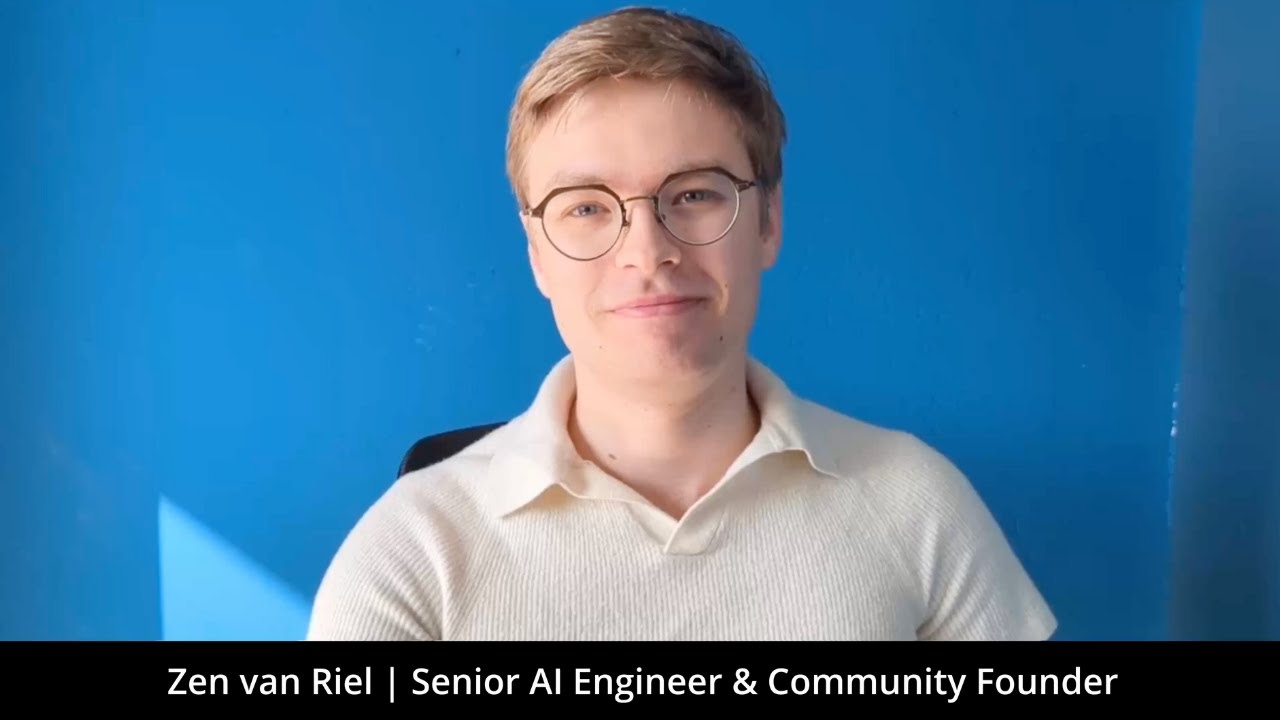Educational Milestones on the Self-Taught AI Engineer Roadmap
My journey from self-taught beginner to Senior Engineer at big tech in just four years revealed an important truth: most educational resources for aspiring AI engineers emphasize the wrong things. When I first started learning AI engineering, I wasted months on theoretical concepts and model architectures while neglecting the practical implementation skills that actually drove my career advancement. This disconnect created a frustrating experience for me and continues to challenge self-learners who invest countless hours in education but struggle to convert that knowledge into job-ready skills. I’m sharing my exact roadmap to help you avoid these pitfalls.
The Implementation-First Learning Approach
The most effective educational approach for self-taught AI engineers—the one I ultimately discovered and followed—inverts the traditional theory-first paradigm:
Implementation Before Theory: I started with practical implementations which created concrete understanding that abstract concepts could later attach to, rather than beginning with theory that lacked practical context. I built working systems before fully understanding every component.
Problem-Driven Learning: I focused on specific problems that needed solving, which provided natural motivation and clear evaluation criteria for success, unlike open-ended theoretical exploration that often led nowhere productive.
Incremental Capability Building: I developed functional implementations with progressively increasing sophistication which built my confidence through continuous achievement, rather than attempting to understand entire domains before attempting implementation.
Documentation-First Research: I learned to extract implementation guidance from documentation and reference implementations which developed crucial self-sufficiency, unlike relying solely on tutorials that often didn’t address my specific challenges.
This implementation-first approach dramatically accelerated my development of practical skills while maintaining necessary theoretical understanding—it’s how I condensed what should have been a ten-year career journey into just four years. If you’re following a similar path, check out my comprehensive AI engineering career roadmap which details the exact steps and milestones.
The Essential Knowledge Foundation
While avoiding excessive theoretical focus, I discovered certain foundational knowledge areas truly matter for implementation success:
Data Structure Fundamentals: Understanding how information is organized and processed forms the basis for working with AI-related data flows. I focused particularly on arrays, dictionaries, and tree structures that appear frequently in AI implementations—critical when I started building RAG systems.
API Interaction Patterns: Learning how to effectively consume and create APIs enabled me to integrate AI capabilities into larger systems. This includes authentication, data formatting, error handling, and asynchronous communication—skills I use daily with cloud AI models.
System Architecture Basics: Grasping how different components interconnect to form complete solutions helped me design maintainable implementations. I focused on service boundaries, data flow patterns, and integration approaches—essential for my production systems.
Performance Optimization Principles: Understanding fundamental approaches to improving system efficiency became crucial when working with resource-intensive AI components. This includes caching strategies, computation deferral, and resource pooling—techniques that made my implementations viable at scale.
These knowledge areas provided the scaffolding for my effective implementation without requiring specialized AI theory that would have taken years to master.
The Four Implementation Milestones
Through my own journey and guiding numerous self-taught engineers in my community, I’ve identified four implementation milestones that consistently mark significant progression:
Milestone 1: Local Model Deployment - I started by successfully running an open-source model in my local environment, which demonstrated basic technical capability. This implementation showed I could navigate model requirements, manage dependencies, and process basic inputs/outputs—my first real stepping stone.
Milestone 2: Integration Implementation - Next, I focused on connecting AI capabilities to existing systems or data sources to show practical application skills. This implementation demonstrated my ability to work within established constraints and deliver enhanced functionality—skills that got me noticed.
Milestone 3: End-to-End Solution - A critical point in my journey was creating a complete application that solved a specific problem from data collection through to user interaction. This demonstrated comprehensive implementation ability and showed I could manage the full complexity of AI solutions—what ultimately got me hired.
Milestone 4: Production Deployment - Finally, I focused on successfully deploying and maintaining AI implementations in production conditions to demonstrate professional-level capability. These implementations proved I could address reliability, monitoring, and maintenance requirements—skills that led to my senior role.
Each milestone represented a significant capability expansion that translated directly to employment qualification and career advancement. This is the exact path I followed from self-taught beginner to senior engineer.
The Skill Acquisition Sequence
Based on my experience, the most efficient learning progression follows a specific sequence of skill development that I used myself:
Phase 1: Foundation Building - I developed core programming proficiency with emphasis on data structures, API interactions, and basic system design. This took me about 2 months with prior programming experience.
Phase 2: Model Interaction - I learned to work with pre-trained models, focusing on input preparation, output interpretation, and basic tuning approaches. This took me about 1 month of focused practice with cloud AI models like Azure OpenAI.
Phase 3: Integration Techniques - I developed skills for connecting AI capabilities with other systems, including data preprocessing, result handling, and error management. This took me about 2 months of implementation practice focusing on RAG and other techniques.
Phase 4: Production Engineering - I mastered the requirements for reliable, maintainable AI implementations including monitoring, versioning, and scaling approaches using Docker and cloud platforms. This took me about 3 months of focused development.
This sequence ensured each new skill built upon a solid foundation of prior capabilities rather than attempting to learn everything simultaneously—a crucial factor in my accelerated career path.
Learning Resource Prioritization
As a self-taught engineer, I faced an overwhelming array of learning resources. Through trial and error, I discovered the most effective approach prioritizes:
Official Documentation: Despite being less exciting than tutorials, I found official documentation provided the most accurate and comprehensive implementation guidance. Learning to extract practical approaches from documentation developed crucial professional skills that separated me from other candidates.
Reference Implementations: I examined working examples of similar implementations which provided practical templates that I could adapt to my specific needs. This became particularly valuable when documentation alone lacked sufficient detail—especially with newer AI models.
Community Discussions: I joined platforms where practitioners discuss implementation challenges, which provided insights into real-world constraints and solutions not covered in formal resources. These discussions often revealed important nuances missed in more structured content—a key reason I created my own community.
Structured Courses: I used targeted courses that addressed specific implementation skills to efficiently fill knowledge gaps, but selected them based on concrete learning objectives rather than general interest—a focused approach that saved me months.
This prioritization focused my learning time on resources with the highest implementation value rather than those that merely explained concepts—a crucial factor in my rapid career progression.
Portfolio Development Integration
The most efficient learning approach—one I followed religiously—integrates education directly with portfolio development:
Learning Project Selection: I chose projects that both developed targeted skills and demonstrated implementation abilities, which maximized the return on my learning investment. Each project advanced my capabilities while also creating showcase material that I could point to in interviews. For specific project ideas and portfolio building strategies, see my guide on building AI engineering portfolio projects.
Progressive Complexity Design: I structured my learning projects with deliberately increasing sophistication which created a natural skill progression while demonstrating my growth trajectory to potential employers—from simple model integration to full production systems.
Documentation as Learning: I created thorough documentation of my implementation approaches which reinforced my learning while simultaneously preparing portfolio materials that communicated my capabilities—documentation that often impressed hiring managers.
Problem-Solving Demonstration: I explicitly recorded the challenges I encountered and solutions I developed during implementation, which showcased my problem-solving approach. This often mattered more to employers than the specific technologies I used and helped me stand out from other candidates.
This integration ensured that my learning efforts simultaneously advanced my capabilities and my ability to demonstrate those capabilities to others—ultimately leading to opportunities at big tech companies.
The self-taught path to AI engineering success emphasizes implementation skills, practical project completion, and strategic portfolio development. By focusing on the educational milestones that directly translate to professional capabilities, you can develop job-ready skills more efficiently than through traditional theory-heavy approaches. This is exactly how I went from a self-taught beginner to implementing AI solutions used by thousands at a big tech company in just four years—a journey that traditionally takes a decade or more.
Ready to follow this roadmap with direct guidance from someone who’s successfully walked this exact path? Join my AI Engineering community where I provide the implementation knowledge, practice opportunities, and feedback you need to succeed—just as I wish I had when starting out. Join us today and I’ll help you turn your understanding into expertise with the exact roadmap I used myself.

